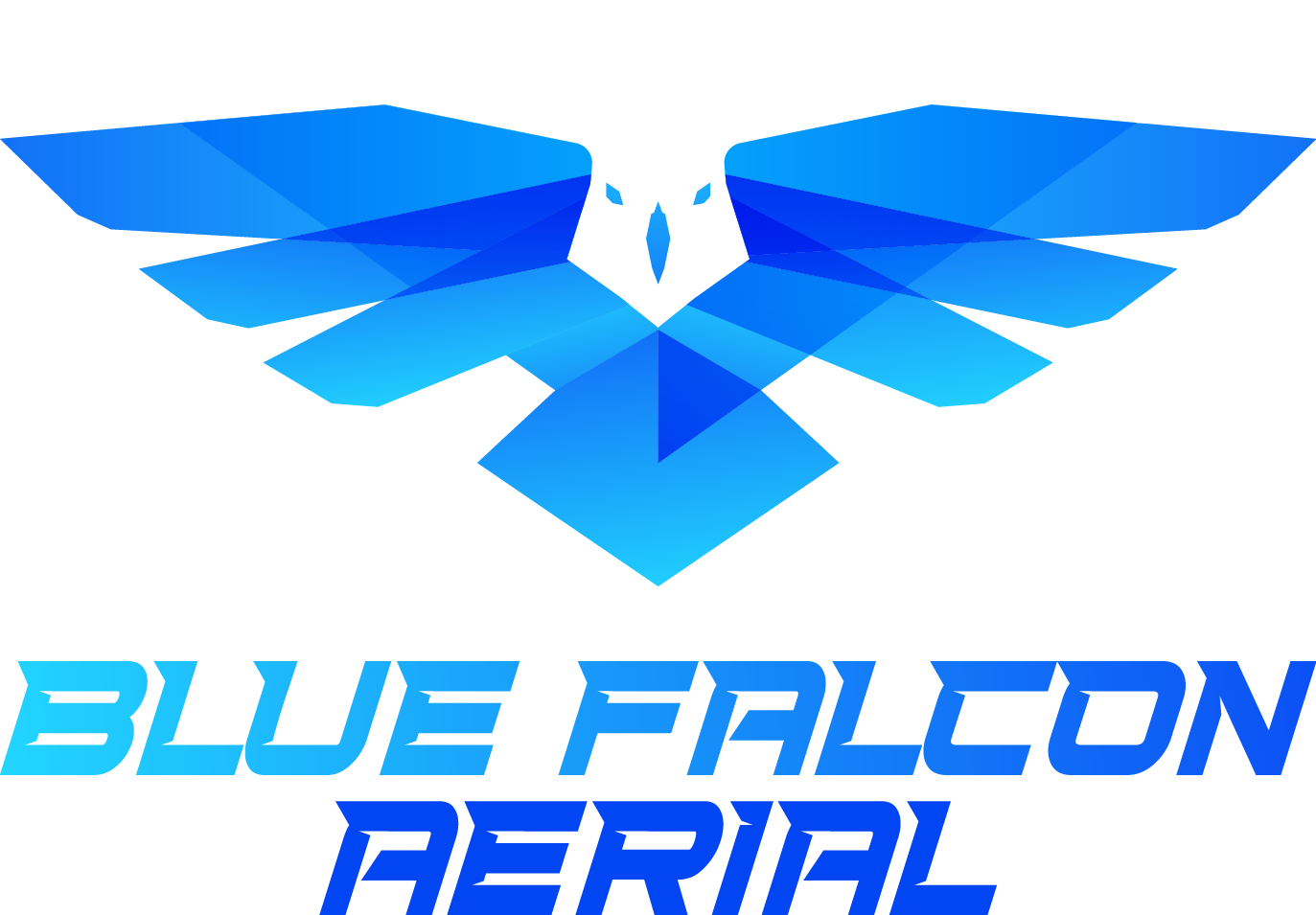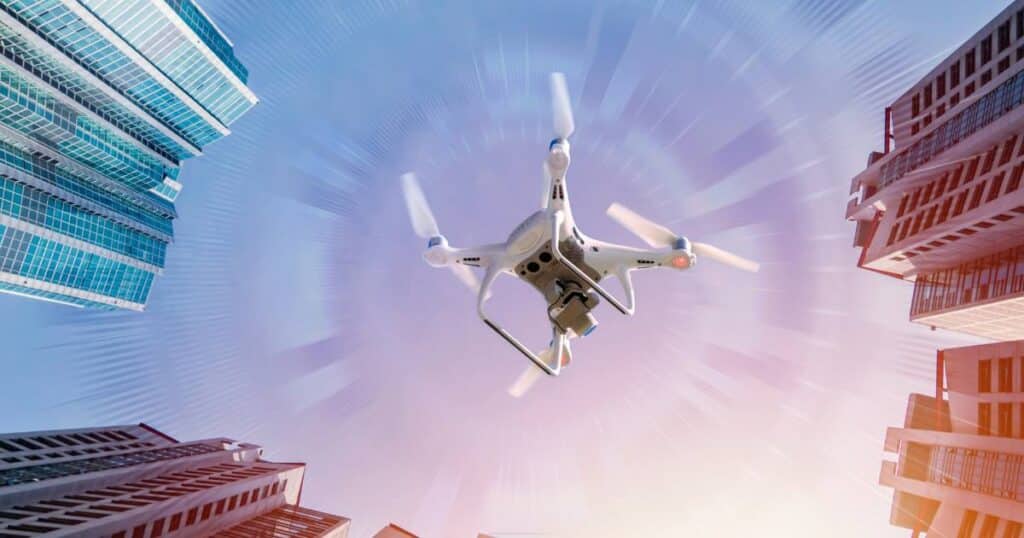The landscape of drones for asset inspection in OK industrial sector is rapidly changing, with cutting-edge technology revolutionizing the way businesses maintain and monitor their assets. Blue Falcon Aerial, a local Oklahoma company, is at the forefront of this transformation, delivering tailored drone solutions that enhance the efficiency and safety of asset inspections across the state. In this article, we’ll explore how drones are improving asset inspection in Oklahoma’s industrial sector, and why choosing a local provider like Blue Falcon Aerial is crucial to your business’s success.
Oklahoma’s Industrial Sector and the Need for Asset Inspection
Oklahoma’s industrial sector plays a critical role in the state’s economy, encompassing a diverse range of industries, including oil and gas, agriculture, power and utilities, and construction. Regular and efficient asset inspection is essential to maintain the safety, integrity, and productivity of these industries. Ensuring the reliability of infrastructure, equipment, and facilities is crucial for continued growth and competitiveness in the marketplace.
Importance of Asset Inspection
Asset inspection helps identify potential issues and damage early on, minimizing the risk of costly repairs, downtime, and accidents. Some key reasons why asset inspection is crucial in Oklahoma’s industrial sector include:
- Ensuring safety and compliance with industry regulations
- Reducing the risk of unexpected equipment failure and downtime
- Extending the lifespan of assets through timely maintenance and repair
- Improving efficiency and productivity by optimizing asset performance
Traditional Methods of Asset Inspection and Their Limitations
Traditionally, asset inspection in the industrial sector has relied on manual methods, such as visual inspections, rope access, and the use of scaffolding or heavy equipment like cranes and cherry pickers. While these methods have been effective to some extent, they come with several limitations:
Time-Consuming and Labor-Intensive
Manual inspection methods can be slow, requiring a significant amount of time and labor to complete. In some cases, inspectors need to access hard-to-reach or dangerous locations, which can further slow down the inspection process and pose safety risks.
Safety Concerns
Climbing structures, working at heights, or navigating hazardous environments exposes inspectors to the risk of accidents and injuries. Moreover, human error can lead to missed issues or inaccurate assessments, potentially resulting in costly consequences.
High Costs
Traditional inspection methods often involve expensive equipment rentals, such as cranes and scaffolding, as well as labor costs for the inspectors themselves. These expenses can quickly add up, making routine inspections a significant financial burden for businesses.
Limited Data Collection
Manual inspections typically rely on the inspector’s ability to visually assess assets and record their findings. This approach can result in limited data collection and varying levels of detail, making it difficult to compare and analyze inspection results over time.
In the next section, we will explore how drones are revolutionizing asset inspection by overcoming these limitations and offering a more efficient, safer, and cost-effective solution.
How Drones are Revolutionizing Asset Inspection
Drones have emerged as a game-changing technology in the field of asset inspection, offering a faster, safer, and more cost-effective solution compared to traditional methods. Equipped with advanced sensors, cameras, and software, drones can capture high-resolution imagery and data, enabling businesses to assess the condition of their assets more accurately and efficiently.
Speed and Efficiency
Drones can cover large areas quickly, significantly reducing the time it takes to complete inspections. Their ability to fly and maneuver around structures enables them to access hard-to-reach areas with ease, providing comprehensive coverage and detailed information.
Safety Benefits
By using drones, businesses can minimize the need for inspectors to work in hazardous environments or at heights, reducing the risk of accidents and injuries. Drones can safely inspect assets from a distance, capturing high-quality images and data without putting human lives in danger.
Cost Reduction
Drones eliminate the need for expensive equipment rentals, such as cranes and scaffolding, as well as labor-intensive manual inspections. By adopting drone technology for asset inspection, businesses can achieve significant cost savings while still obtaining accurate and reliable information.
Access to Hard-to-Reach Areas
Drones can easily navigate difficult-to-reach locations, such as the underside of bridges, tall structures, or confined spaces, providing a more thorough and accurate assessment of assets. Their agility and maneuverability enable them to capture high-resolution images and data from virtually any angle or position.
High-Quality Data Collection
Drones are equipped with advanced sensors and cameras that can capture high-resolution images, videos, and other types of data, such as thermal, LiDAR, and multispectral imagery. This wealth of information enables businesses to make more informed decisions about maintenance, repairs, and asset management.
How Drones are Used for Asset Inspection in the Industrial Sector in OK
Drones have found a wide range of applications in Oklahoma’s industrial sector, enabling businesses to enhance their asset inspection processes and gain valuable insights into their infrastructure and facilities. Some common uses of drones for asset inspection in the industrial sector include:
Industrial Inspection Drones
Drones can be equipped with various sensors and cameras to meet the specific needs of different industries. For example, thermal cameras can detect heat signatures, helping identify potential issues in electrical systems or pipelines, while LiDAR sensors can generate accurate 3D models of structures and terrain.
Drones for Pipeline Inspection
In Oklahoma’s oil and gas industry, drones can be utilized to inspect pipelines for leaks, corrosion, and other potential issues. With their ability to fly close to the ground and access remote locations, drones can provide detailed and accurate data on the condition of pipelines, minimizing the risk of environmental damage and costly repairs.
Drone Inspection Services for Industrial Assets
Drones can be used to inspect various industrial assets, such as power lines, wind turbines, solar panels, and communication towers. By capturing high-resolution imagery and data, drones enable businesses to detect issues, schedule maintenance, and monitor the performance of their assets more effectively.
Best Drones for Infrastructure Inspection
For infrastructure inspection, drones equipped with high-resolution cameras and advanced sensors can be employed to assess the condition of bridges, roads, dams, and other critical structures. Drones can quickly and safely inspect these assets, identifying potential problems and helping prioritize repair and maintenance efforts.
Drone Inspection Technology for Oil and Gas Industry
In the oil and gas industry, drones can be used for a variety of tasks, including inspecting storage tanks, flare stacks, and offshore platforms. They can detect gas leaks, monitor emissions, and assess the integrity of assets, helping companies maintain regulatory compliance and reduce the risk of accidents.
Benefits of Using Drones for Asset Inspection in the Industrial Sector in OK
The adoption of drones for asset inspection in Oklahoma’s industrial sector offers numerous benefits that go beyond traditional inspection methods. By leveraging drone technology, businesses can enhance their inspection processes, improve safety, and reduce costs. Some of the key benefits include:
Enhanced Inspection Efficiency
Drones can cover large areas quickly and efficiently, reducing the time it takes to complete inspections. By capturing high-resolution imagery and data, they provide businesses with accurate and detailed information about their assets, enabling them to make better-informed decisions about maintenance and repairs.
Improved Safety
Drones minimize the need for human inspectors to work in hazardous environments or at heights, reducing the risk of accidents and injuries. By conducting inspections remotely, businesses can prioritize the safety of their employees while still obtaining the necessary information to maintain their assets.
Reduced Costs
By eliminating the need for expensive equipment rentals and labor-intensive manual inspections, drones offer a more cost-effective solution for asset inspection. Businesses can achieve significant cost savings without compromising the accuracy and reliability of their inspection data.
Access to Hard-to-Reach Areas
Drones can easily navigate and inspect difficult-to-reach locations, providing a more thorough assessment of assets. Their agility and maneuverability enable them to capture high-resolution images and data from virtually any angle, ensuring that businesses have a complete understanding of the condition of their assets.
Data-Driven Decision Making
With advanced sensors and cameras, drones can capture a wealth of data that can be analyzed and used to make informed decisions about asset maintenance, repairs, and management. This data-driven approach helps businesses optimize their operations and prioritize investments in their assets.
Top Drones for Industrial Inspections in OK
Selecting the right drone for industrial inspections is crucial to ensure that businesses can obtain accurate and reliable data about their assets. Some of the top drones for industrial inspections in Oklahoma include:
DJI Matrice 300 RTK
The DJI Matrice 300 RTK is a versatile and powerful drone, designed for a wide range of industrial applications. Equipped with an advanced RTK (Real-Time Kinematic) positioning system, it offers high-precision navigation and can be outfitted with various payloads, including cameras and sensors for different inspection needs.
senseFly eBee X
The senseFly eBee X is a fixed-wing drone designed for mapping and surveying applications. With its long flight time and ability to cover large areas quickly, it is an ideal choice for inspecting infrastructure, pipelines, and other large-scale assets.
Parrot Anafi USA
The Parrot Anafi USA is a compact and lightweight drone that can be easily deployed in the field. It features a 32x zoom camera, thermal imaging capabilities, and a rugged design, making it suitable for various industrial inspection tasks, including electrical, structural, and pipeline inspections.
Flyability Elios 2
The Flyability Elios 2 is a specialized drone designed for inspecting confined spaces and indoor environments. With its collision-tolerant design and advanced sensors, it can safely navigate and inspect complex structures, such as storage tanks, tunnels, and industrial facilities.
When selecting a drone for industrial inspections, it is important to consider factors such as payload capacity, flight time, navigation capabilities, and the specific requirements of the inspection tasks. By choosing the right drone, businesses can ensure that they obtain accurate and reliable data to maintain their assets effectively.
Regulations and Guidelines for Using Drones in Industrial Inspections in OK
Before implementing a drone inspection program, it is essential to be aware of the regulations and guidelines governing drone operations in Oklahoma and across the United States. These regulations help ensure the safe and responsible use of drones in various applications, including industrial inspections.
Federal Aviation Administration (FAA) Regulations
The FAA is responsible for regulating the use of drones in the United States. Some key regulations and guidelines for using drones in industrial inspections include:
- Part 107: Commercial drone operators must obtain a Remote Pilot Certificate under the FAA’s Part 107 regulations. This certification requires passing a knowledge test and demonstrating an understanding of airspace rules, safety procedures, and other relevant topics.
- Drone Registration: Drones weighing between 0.55 and 55 pounds must be registered with the FAA before being flown.
- Airspace Restrictions: Drones must not be flown in restricted airspace, such as near airports, military installations, or critical infrastructure. Operators must obtain airspace authorization through the FAA’s LAANC (Low Altitude Authorization and Notification Capability) system if flying in controlled airspace.
- Operational Limitations: Drones must be flown below 400 feet above ground level, within visual line-of-sight of the operator, and not over people or moving vehicles. Nighttime operations are allowed with appropriate lighting.
Oklahoma State Regulations
In addition to the FAA regulations, drone operators must also comply with state-specific regulations. In Oklahoma, the following laws apply:
- Privacy Protection: Oklahoma’s drone laws prohibit the use of drones for capturing images of private property or individuals without their consent.
- Critical Infrastructure: Drones are not allowed to be flown within 400 feet of designated critical infrastructure facilities, such as oil and gas installations, power plants, and telecommunications infrastructure, without permission.
It is crucial for businesses to ensure that their drone inspection programs comply with all applicable regulations and guidelines to avoid potential fines, legal issues, or operational disruptions.
How to Implement a Drone Inspection Program for Industrial Assets in OK
Implementing a drone inspection program for industrial assets in Oklahoma involves several key steps, from selecting the right drone and equipment to training personnel and adhering to regulations. Here’s a step-by-step guide to help businesses successfully integrate drones into their asset inspection processes:
Step 1: Identify Inspection Needs
Determine the specific inspection needs and requirements of your business, including the types of assets, frequency of inspections, and the data that needs to be collected. This will help guide the selection of appropriate drones and equipment.
Step 2: Choose the Right Drone and Equipment
Select a drone and any necessary sensors, cameras, or payloads based on your business’s inspection needs. Consider factors such as flight time, payload capacity, and navigation capabilities when making your selection.
Step 3: Obtain Necessary Certifications and Permissions
Ensure that drone operators obtain the required Remote Pilot Certificate under the FAA’s Part 107 regulations and register the drone with the FAA. Additionally, secure any necessary airspace authorizations or permissions to operate near critical infrastructure.
Step 4: Train Personnel
Provide training for drone operators and any other personnel involved in the drone inspection program. This may include training on drone operation, data collection and analysis, and safety procedures.
Step 5: Develop Standard Operating Procedures (SOPs)
Establish standard operating procedures for drone inspections, including pre-flight checks, flight planning, data collection, and post-flight procedures. These SOPs will help ensure consistent and efficient operations.
Step 6: Integrate Drone Data into Asset Management
Incorporate the data collected by drones into your business’s asset management system, enabling better-informed decision-making about maintenance, repairs, and investments in your assets.
Step 7: Monitor Regulatory Changes
Stay up-to-date on regulatory changes and updates related to drone operations at both the federal and state levels. This will help ensure that your drone inspection program remains compliant with all applicable regulations and guidelines.
By following these steps, businesses in Oklahoma can successfully implement a drone inspection program for their industrial assets, benefiting from the enhanced efficiency, safety, and cost savings that drone technology offers.
Drone Inspection Services for Industrial Assets in OK
When it comes to implementing a drone inspection program for your industrial assets in Oklahoma, partnering with a professional drone inspection service provider can be a significant advantage. These experts have the experience, equipment, and knowledge necessary to help businesses optimize their inspection processes, ensuring accurate and reliable data collection while adhering to all regulatory requirements.
Blue Falcon Aerial: A Trusted Partner for Your Drone Inspection Needs
One such expert in the field is Blue Falcon Aerial, a local Oklahoma company that specializes in drone services for various industries, including the industrial sector. Blue Falcon Aerial is well-equipped to assist businesses with their drone inspection needs, offering services such as orthomosaic mapping and LiDAR scanning.
Orthomosaic Mapping
Orthomosaic mapping is a valuable tool for asset inspection, providing high-resolution aerial images that can be used to assess the condition of assets, monitor changes over time, and identify potential maintenance needs. Blue Falcon Aerial’s orthomosaic services can be found here.
LiDAR Scanning
LiDAR (Light Detection and Ranging) scanning is an advanced remote sensing technology that uses laser pulses to create detailed 3D models of assets and their surroundings. This data can be invaluable for inspections, enabling businesses to identify potential issues that may not be visible through traditional inspection methods. To learn more about Blue Falcon Aerial’s LiDAR services, visit their LiDAR page.
Comprehensive Deliverables
Blue Falcon Aerial offers a range of deliverables to ensure that businesses have the data they need to make informed decisions about their assets. From high-resolution imagery to detailed 3D models, their deliverables provide valuable insights into the condition and performance of your industrial assets.
Conclusion
Drones are revolutionizing the way asset inspections are conducted in Oklahoma’s industrial sector. By leveraging drone technology, businesses can improve the efficiency, safety, and cost-effectiveness of their inspection processes. To fully harness the benefits of drones for asset inspection, it is essential to choose the right equipment, adhere to regulatory requirements, and implement a comprehensive drone inspection program.
For businesses in Oklahoma seeking assistance with their drone inspection needs, Blue Falcon Aerial is a trusted local provider that offers a range of services, including orthomosaic mapping and LiDAR scanning. To learn more about how Blue Falcon Aerial can help enhance your asset inspection processes, visit their website and reach out to them for any drone services you may need.




